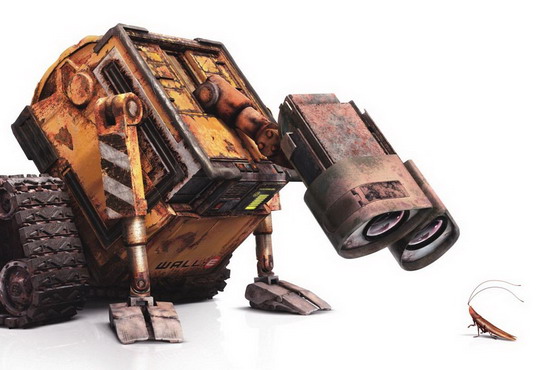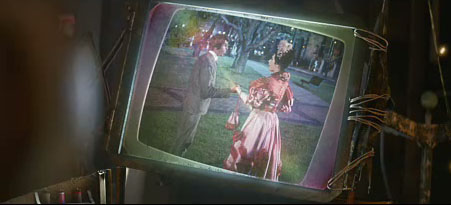 |
It makes sense that a children's film would find so much success without dialogue there to shape and
mold it, and the content is far enough removed that the audience would not find its "mythology"
unbelievable. Barthes describes mythology as "not defined by the object of its message, but by the
way in which it utters this message" (Rose 96). The added benefit of the science fiction perspective
allows for children as well as adults to both see and maintain their suspension of disbelief. We
can watch Wall-e discover human emotions by visual means, struggle with a pseudo-prepubescent notion
of heterosexual romance, and pursue the ethics of human preservation in a post-apocalyptic society
without dismissing it as absurd, fake and beyond current reality. "Science fiction as a genre of art
lends itself to the presentation of psychological issues through situations and story lines that are
unlikely to occur, but not impossible" (Zerby 316). The film opens with Wall-e as robot-cum-sentient,
intelligent force capable of learning and emulating human emotion. This assertion is the
myth behind the basic "form" that is Wall-e (form being the lowest level of Barthes's mythology
structure.) The way in which Wall-e is presented to the audience visually "naturalizes" his humanism.
Wall-e has personality, he has curiosity. He shows us his curiosity through his job as planet janitor
and obsessive collector. Also, he portrays human qualities like shock and remorse when he runs over
his pet cockroach, loneliness when he watches Hello, Dolly!, fear when Eve's ship lands, love when
he actually meets Eve, and bravery in the face of Auto, the antagonistic Axiom auto-pilot. The
"signifier" is the image of Wall-e as that of a machine which performs tasks and can perform human
emotion. |




